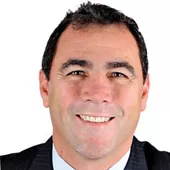Initial situation
68 year old male, non-smoker, presenting Type 2 Diabetes under control. Undergone previous dental implant treatments with positive results in the past, the patient presented tooth to the office with tooth 36 in non-restorable situation with indication for extraction requested dental implant as the treatment choice. Different treatment possibilities have been discussed:
- Extraction, healing and conventional implant placement.
- Extraction and immediate placement with conventional healing and then final prosthesis.
- Extraction, implant placement and immediate functional loading of the implant.
In his previous treatments the patient has experienced successful treatment outcome with 1-Tooth 1-Time technique, which is a technique that provides the final crown to be produced and seated in immediate occlusal function right after the surgical procedure. For this particular case, given the systemic condition it was suggested to provide a crown that could be put into immediate function but with temporary material during the healing phase making sure the systemic condition has not affected the soft tissue healing and contours when starting the final crown. After full discussion, the patient opted for solution 3. All the parameters supported the chosen treatment.
Treatment planning
After careful assessment of the patient’s anatomical conditions through panoramic radiograph and CBCT scan (Fig. 01, 02 and 03), it was possible to verify ideal interradicular bone availability allowing the following treatment planning:
- Minimally traumatic tooth extraction
- Immediate implant placement (Straumann® TLX®, Ø3.75mm x 12mm)
- Intra-oral scanning
- Temporary crown design and chairside milling
- Immediate provisional crown in function
- After osseointegration and soft tissue maturation proceed with final crown.





























